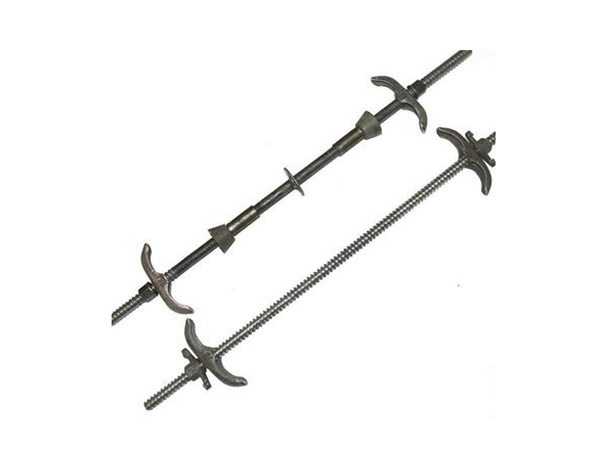- Site Navigation -

Masonry Wall Anchor Bolt
A Masonry Wall Anchor Bolt is a broad category of fasteners specifically engineered to securely attach objects to solid,brittle materials like concrete,brick,block,and stone.......
Masonry Wall Anchor Bolt:English Introduction
A Masonry Wall Anchor Bolt is a broad category of fasteners specifically engineered to securely attach objects to solid,brittle materials like concrete,brick,block,and stone.Unlike screws for wood,these bolts cannot grip the material by their threads alone.Instead,they employ various mechanical mechanisms to create a powerful holding force by engaging the internal structure of the masonry.
Their primary function is to provide a strong,reliable,and often permanent connection point in materials that are hard but can be crumbly or porous.
Key Mechanisms:
Anchor bolts achieve their hold through one or more of the following principles:
Expansion:The most common type.As the bolt is tightened,a sleeve,plug,or clip expands radially,pressing tightly against the walls of the pre-drilled hole to create immense friction and mechanical interlock.
Undercut:A specialized,high-strength type where the bottom of the hole is shaped to have a wider cavity.The anchor is then locked into this cavity,creating a mechanical keying effect that is extremely resistant to pull-out forces.
Bonding:Chemical adhesives(epoxy or polyester resin)are injected into the hole.The threaded rod(rebar or all-thread)is then inserted.The adhesive cures,bonding the rod to the entire internal surface of the hole,distributing the load evenly and providing exceptional strength.
Common Types of Masonry Anchor Bolts:
Wedge Anchor:A high-strength expansion anchor for solid concrete.Tightening the nut pulls a wedge up,splaying the clip at the bottom of the anchor apart.
Sleeve Anchor:A versatile anchor with an expansion sleeve surrounding the bolt.Tightening the nut pulls the cone-shaped end into the sleeve,causing it to expand.Suitable for solid brick,block,and concrete.
Drop-In Anchor:A female anchor set into a pre-drilled hole.It is expanded using a special setting tool.A bolt is then screwed into the installed anchor.Ideal for flush-mounted applications.
Strike Anchor(Hammer Drive Pin):A simple anchor where a pin is hammered into a sleeve,causing it to expand.Used for light to medium duty applications.
Lag Shield(Lead Shield):A lead sleeve used with a lag screw.As the lag screw is driven into the shield,the soft lead expands against the masonry.
Chemical Anchor(Epoxy Anchor):As described above,this system uses a two-part resin and a threaded rod.It offers the highest strength and is best for edge-of-slab applications and dynamic loads.
Through-Bolt:A rod that passes completely through the wall and is secured with a plate and nut on the far side(as described in the previous section).
Common Applications:
Structural:Securing sill plates to concrete foundations,attaching structural steel to masonry.
Construction:Installing wall frames,securing ledger boards for decks,anchoring handrails and guardrails.
Industrial:Mounting heavy machinery,conveyor systems,and pipework to concrete floors and walls.
Commercial/Residential:Fastening wall cabinets,shelving units,TV mounts,and electrical boxes to brick or concrete walls.
Advantages:
High Load Capacity:Designed to handle significant tensile(pull-out)and shear(snap)loads.
Versatility:A wide range of types and sizes are available for different materials(solid vs.hollow)and load requirements.
Reliability:When installed correctly in appropriate base material,they provide a very secure and permanent hold.
Corrosion Resistance:Many are available in stainless steel,hot-dip galvanized,or zinc-plated finishes for indoor or outdoor use.
Critical Installation Factors:
Hole Diameter&Depth:Must be drilled exactly to the manufacturer's specifications for the anchor size.A hole that is too big or too shallow will drastically reduce holding power.
Base Material:The anchor must be chosen based on whether the masonry is solid(e.g.,poured concrete)or hollow(e.g.,cinder block).
Embedment Depth:The minimum depth to which the anchor must be set into the base material to achieve its rated strength.
Hole Cleaning:For all anchors,especially chemical anchors,it is critical to clean the hole of all dust and debris using a wire brush,compressed air,or a vacuum to ensure proper engagement and holding strength.








